On Mind, Matter & Meaning (IRA Excerpt)
If we take this epistemic bent then, presume that knowledge, really information, is the most basic structure of the universe, our epistemological ontology as we’re calling it, we end up with a very different picture of the universe than say if we take the physicalist or materialistic approach as has been predominant since the Enlightenment more or less. We also of course don’t end up with this ontology by accident, Physics itself has led us here (black hole thermodynamics, holography, quantum mechanics, neuroscience…). What seems to be happening here, with respect to the state of the world (no pun intended) intellectually, is that science itself is starting to converge on some of the very same principles of interconnectedness, of wholeness – very ancient ideas mind you – from a variety of perspectives or vantage points, from the various academic disciplines in and of themselves basically. We see this perhaps most prominently in the field of philosophy and to a lesser extent perhaps in the humanities more broadly, but we also see this collision course somewhat ironically from the most ‘objective’ of the sciences, from Physics itself. All of these various disciplines, these various perspectives on knowledge, which is what science means ultimately, have become confronted in one way or another with this thing we like to call consciousness (the dreaded c word), and each of them is having to delve, somewhat clunkily and uncomfortably at times we must say, into the realm of philosophy to find at least the basis within which they can even provide answers to some of these fundamental questions – like why it is that biology exists at all, why it is that neurons fire the way they do, and what it is, or how it is, that existence itself has ‘come to be’.
Not by accident of course, what we are also seeing, is that each of these academic disciplines in their own way seem to be converging on this notion of an organic, participatory version of reality, an idea that sits at the heart of many of the ancient philosophical traditions, perhaps most notably Daoism (Lao-Tzu, I Ching), Stoicism and Vedānta (Upanishadic philosophy primarily in its non-dual, Advaita form). Physics in particular, with the introduction and acceptance of Quantum Theory experimentally validates these claims to at least some degree, directly from and out of the materialistic and physicalist perspective of reality paradoxically. What seems to be missing however from this dialogue, is how it is that psychology, or as we describe it herein mind, which exhibits characteristics that defy (like Quantum Mechanics in fact), the laws of time and space as we understand them through classical physic (e.g. the various psi phenomena such as pre-cognizance or retro-causation for example, see Bem 2011 and Bem at al 2016), fits into this intellectual paradigm. And yet if the universe itself is somehow conscious, then they must exhibit, be subject to, psychology at least in some form. Once this intellectual step is allowed, one can also conceive of psychological metaphysics if we may coin a term, as facilitating the understanding of psychology more generally, as it relates to understanding human behavior and motivation for example.
If we approach the problem through a mechanical lens, specifically through a quantum mechanical lens, we are confronted with this problem of paradoxes, this philosophical abyss where we are confronted with the problem of distinguishing between the perceiver and the perceived, or the subject and object, or more generally the mind and matter itself. To get even more into the mechanical weeds as it were, what we are presented with given the results of, and various forms of, the famed double slit experiment is that a) reality itself doesn’t manifest in a definable and specifically measurable way until it is observed in some sense, and that b) reality can be conceived of as both a wave and matter (particles) depending on how we choose to look at it.
The sheer profound implications of this fundamentally mechanical discipline, well established through physical experiments at this point, cannot be overstated. It really changes everything and even after 100 years since its ‘discovery’, no clear consensus has been come to as to what it is that it really means. The irony here, certainly as it related to this work in particular which presumes meaning itself is primary, through information, is rich to say the least. But again what appears to be missing from the various approaches, really interpretations, of this mind-matter distinction which now presents itself through physics itself, is a clear picture of this psycho-physical bridge, a framework for describing how it is we move from one field to the other, and what sort of transformations and transmutations arise as we pass through this theoretical (information based) interface.
I am most certainly not the only person aware of this or working on this problem, but it would seem, in perhaps a somewhat naïve and overly optimistic way (a state of mind from which all great innovation comes arguably), that I have something to contribute to these discussions. I believe the physics is here already, we just need to put the pieces together, follow the intellectual (scientific) breadcrumbs as it were, breadcrumbs which seem to lead at the doorstep of philosophy, yes, but from an engineering perspective, a perspective close to home, right into the heart of information systems theory. For it would appear that information, or knowledge in its very specific and idempotent sense, seems to be the place not just where the various laws of physics appear to merge (holographic principle again) but where the bridge between mind and matter must be drawn. It’s information theory, a theory which is predicated on meaning, its underlying structure as it relates top said meaning (language), which also can be used to provide the basis for understanding both man, from a psychological perspective, as well as machine, from a computing and software engineering (and systems) perspective.
What all intellectual based endeavors are predicated upon in fact, is that they all represent various modes of, and structures of, meaning which are in turn encoded in various symbols and structures that are inherent to each of the respective intellectual disciplines, each of which is represented in a specific academic domain, and if applied in the most general sense, can be understood to reflect the intelligent structure of the universe itself. But if we want to understand what these intellectual models are telling us, what they mean, especially the ones that underpin physics that consist basically of algebraic and mathematical formulations of ‘measurable things’ (measurables we call them elsewhere) and their respective relations to each other, we find ourselves in the awkward position of (what again Quantum Mechanics reveals to us quite directly, and paradoxically) being faced with the fact that, in a quite precise and measurable way, we participate in the very construction of objective reality itself.
This is such an odd and unexpected situation, so at odds with how it is we conceived of the foundation of physical reality, that we have been struggling with what to make of this empirical fact for the better part of 100 years. Whatever place we come to however, we must – at least if we try to elicit some ontological understanding from the mechanics itself – consider both the physical as well as the mental aspects of reality as fundamental to any description of reality. This is ultimately how we arrive at IRA.
This mind-matter conundrum has a deep history in ancient mystery and mystical traditions of course, which in its most radical form of course, we are confronted with the age-old Hermetic adage that tells us, ‘as above so below’, an adage we find in the gnostic Gospel of Thomas (verse 22) as well, “
When you make the two one, and when you make the inside as the outside, and the outside as the inside, and the upper as the lower, and when you make the male and the female into a single one, so that the male is not male and the female not female, and when you make eyes in place of an eye, and a hand in place of a hand, and a foot in place of a foot, an image in place of an image, then shall you enter [the kingdom].[1]
The implication here is that if indeed we are to fully understand how it is that the inside and outside are related, how it is that the state of mind relates to the state of the world in our parlance, we may in fact be presented with, confronted with, some of the highest order mystical knowledge know to man throughout (recorded) history.
But if the world ‘above’ and the world ‘below’ are mirrors of each other – as we see in fractal geometry for example, or with the golden phi ratio and Fibonacci numbers (Valdez 2022b) – then we must ask ourselves what it is that is being reflected? This is of course a very good question, one that arguably lies arguably at the very heart of the Western intellectual exercise. The word essence comes from the Latin word essentia, which is the typical translation of the Aristotelian term for substance, or ousia in the Greek, which lays at the heart of Aristotle’s notion of substantial form, which lays at the heart of both his metaphysical enterprise, i.e. first philosophy, as well as his physical enterprise, i.e. natural philosophy.
Following this line of thought then to its natural conclusion, we find that in our most essential nature we are in fact fractals of consciousness in a sea of consciousness. From the smallest of cells in our bodies, to the plants and trees and all living things, to the cosmos itself, it’s all alive and flowing in a constant, vibrating and pulsating energetic epiphany. This is in essence (pun intended) what all the mystery traditions from antiquity teach us, what Yoga and Daoism teach us, and even the Abrahamic religions too, for all their flaws. We see this for example in Genesis, where it is put forward that we are created in the image of God. Pretty sure this doesn’t mean that God looks like us.
The missing piece then intellectually, given our again almost obsessive reliance on objective facts as the only means by which scientific truths can be arrived at since religion was discarded for science in the post-enlightenment intellectual era, is – necessarily – a relaxing of the objective, mechanistic, materialistic worldview to include the conscious observer into the model itself. In other words, in order to understand what quantum mechanics means we must have a good working definition of meaning itself, the one is not possible without the other. This sounds obvious but at the same time is oft confused by physicists and scientists who take the almost religious (using that term loosely here to denote devoid of reason) position that somehow when the universe was created, it came with an operator’s manual that included the laws of physics and mathematics as well as well formed definitions of things such as mass, energy, light, gravity and other terms that provide the (epistemic) foundations of physics.
And while many academic disciplines have made marked progress rooting their respective disciplines on more ‘scientific’ grounds (cognitive science and psychology for example), these new grounds have mostly been physicalist and materialist, which tells only part (really half) of the story. It is from this school of thought for example that consciousness is an emergent (physicalist) phenomenon comes from. We shall no doubt be waiting for a long time before a computer becomes conscious. We can talk about it, create movies about it, tell stories about it, but do we really think that consciousness is something that can be manufactured? In the same way a pipe or a car is manufactured? We remain deeply confused as to what consciousness is and where it comes from, hence the dreaded c word designation.
Yes the math is beautiful and harmonic, begging all sorts of questions about intelligent design, but its math that we have conceived of, through our participation in the creation of the science itself. This all points to the need for a higher order framework of understanding that not only deals with physical phenomenon, noumena or ‘measurables’, but also fundamentally incorporates us as thinking, cognitive agents (scientists some call us) who frame and construct these experiments, and from which the underlying intellectual frameworks that underpin said experiments are thought up with to begin with. We’ve reached a point on our intellectual journey as a species where we can no longer ignore this truth, that the complete picture of the world, of reality, depends just as much on us as cognitive, sentient beings as it does on the objective aspect of the world, which we know and understand through our perception of it. Somewhat paradoxically again, this puts us back to the very beginning of the philosophical tradition in the West, for Plato and Aristotle (and Socrates and the rest of the Pre-Socratics for that matter) did not conceive of an objective world that was devoid of perception, this was a much later, really post-Enlightenment, development.
This higher order truth from which both subjective and objective reality, mind and matter, yin and yang, unfold out of is what Bohm referred to as the implicate order, the ever changing and shifting source of all aspects of (experiential) existence from which both mind and matter emerge as a constant interplay of interconnected, cosmic dancing energy, what Bohm called the holomovement and which the ancient Indians conceived of as Dancing Siva (Shiva), or Naṭarāja.
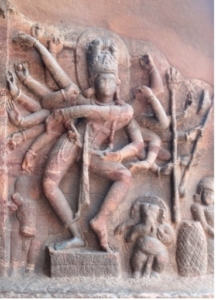
Depiction of Dancing Siva from 6th/7th Century CE[2]
This is ultimately what we should take away from Quantum Mechanics, at least when we apply a knowledge based lens as we do here. That all things, which include cognitive sentient beings as well as the things we typically conceive of as objective, stem from the same source, a source that somehow comes together in the very act of experience itself. This is how the mind and matter meet. We are the tool, our mind-body system itself, from which experience emerges and by which anything at all can be said to exist. Existence, by definition, doesn’t exist without anyone to recognize, or cognize, it. It’s a non sequitur. With no experiencer there exists just an infinite void of, well nothing. In this sense then, from an epistemological perspective at least, we are the experiment in the sense that it is from us, from the act of cognition and awareness associated with it, that any understanding of the act of (objective) measurement – to use quantum mechanical parlance – can be made ‘sense’ of. It is from our psyche, from our ‘minds’, what von Neumann referred to in the most scientific way possible as the ‘abstract ego’, from which any sort of meaning related to any sort of experience must both depend on and emerge from.
People miss this, scientists miss this, all the time. This seemingly glaringly obvious fact doesn’t stare them in the face necessarily, it is their face. The very intellectual ground upon which one’s persona is based is the very same ground upon which all reality is experienced and can be said to exist at all. We have the ability to influence our physical reality – this is fact. How integrated is this reality to ‘us’? This is the open question, and this is the spectrum within which we measure the scale of the Metaphysics of Awareness (Valdez 2019, 2022a). The thing is, we need to change our perspective to see this truth, or this alternate truth as you might call it. We don’t have to necessarily believe that the epistemic universe is the true universe, the right one so to speak, but we are really led to the conclusion that if we exist in a universe that has some meaning to it, then this universe needs to be looked at through an epistemic lens. What we propose here, with IRA, is a reference frame for said lens.
Where we are led to, quite unexpectedly I think it is fair to say, is to at least a place where it must be considered that some of these ancient texts might have been pretty spot on when they spoke of the world as not quite as real as we make it out to be, as a rope at dusk can be confused for a snake as we are taught in Indian philosophy, i.e. the doctrine of Maya. This isn’t so much religious conviction that they have been teaching for all these thousands of years, perhaps it is a valid empirical truth from a certain vantage point. The vantage point has to be supra-physical of course but who is to say that this vantage point is any more or less valid than the physical one? We can let the academics argue about this ad nauseum but for us here we presume at least that it is equally valid, and entertain the possibility that it might in fact be – as mystics across cultures in time and space have been telling us since time immemorial – in fact more real than the physical reality is that we experience in our daily, conscious waking lives.
From this vantage point then, from an epistemic and information-based vantage point that we try to capture algebraically and mathematically herein with IRA, reality can be best understood as (and this is consistent with both Kant and Schopenhauer’s position really) a sort of holographic projection of mental phenomena onto the physical world. That we not only interpret the world around us based upon our prior experience, upbringing and general mental constitution, but that in some sense we participate in the very creation of the material world, as again we perceive it and as we look to make sense of it. This isn’t a mystical proposition as much as it is a necessary, logical conclusion to be drawn from the efforts to understand the nature of reality as it has been revealed to us through physics specifically and the sciences more generally in the 21st century.
[1] Gospel of Thomas, verse 22. Translation by Blatz, from http://www.earlychristianwritings.com/thomas/gospelthomas22.html.
[2] Photo from Wikipedia commons by Jean-Pierre Dalbéra from Paris, France – Temple troglodytique dédié à Shiva (Badami, Inde), CC BY 2.0, https://commons.wikimedia.org/w/index.php?curid=37213652.

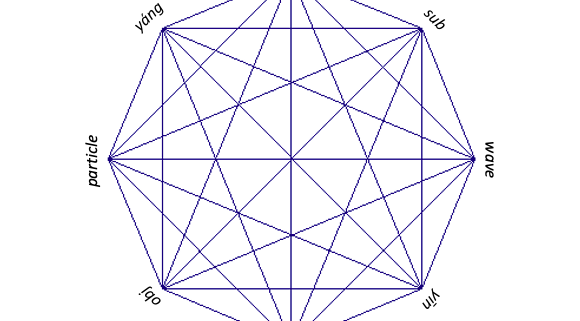

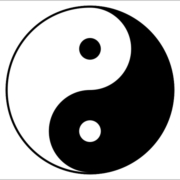
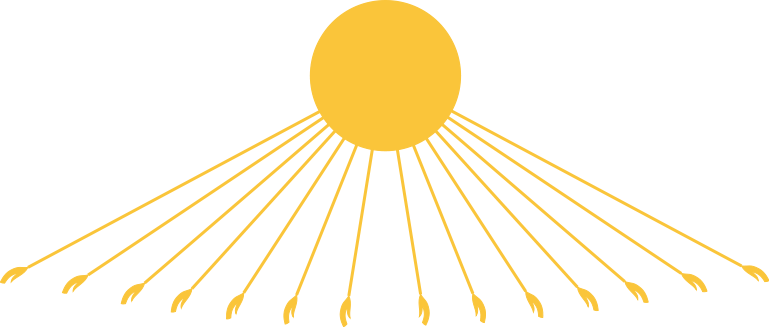

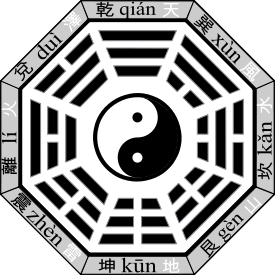
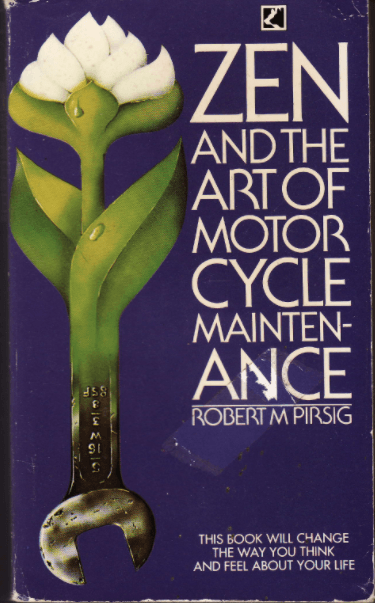
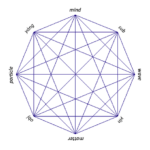

Leave a Reply
Want to join the discussion?Feel free to contribute!